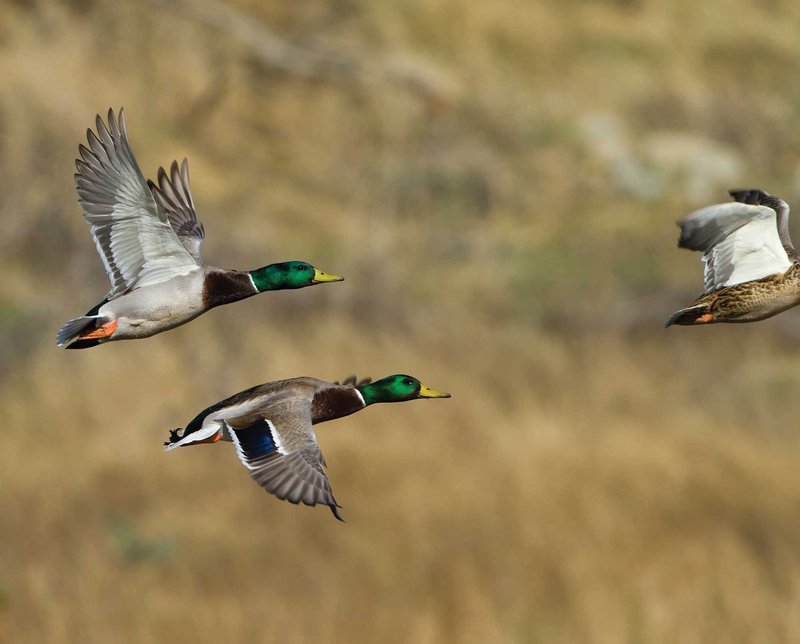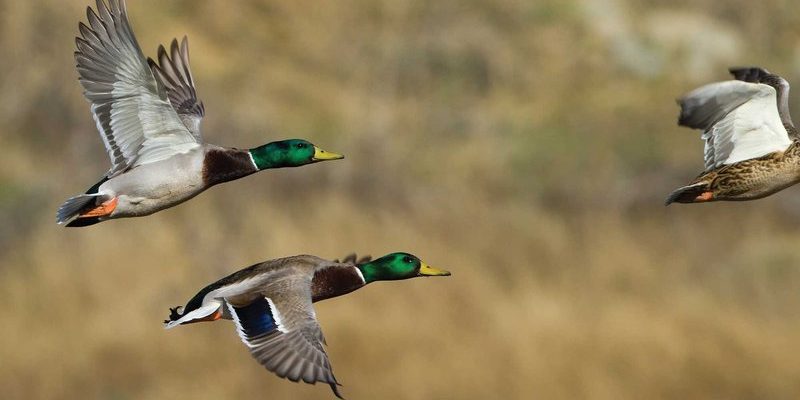
Imagine watching a mallard take off—it’s almost like a ballet in the air. The way they soar and dive is not just beautiful; it’s part of their survival tactics. With their unique flying and hunting techniques, mallards have honed skills that allow them to thrive in a variety of habitats. From their impressive aerial acrobatics to their stealthy foraging methods, let’s dive deeper into the world of the mallard and discover what makes this bird so special.
Understanding the Mallard’s Flight Patterns
The mallard isn’t just any duck; it’s acrobatic and agile in the air. When they take to the skies, they can reach speeds up to 55 miles per hour. That’s like a car zooming down a city street! Their flight patterns are essential for both migration and avoiding predators.
Mallards have an incredible ability to navigate during migration. They often travel in groups, called flocks, which look like a beautiful formation in the sky. This cooperative flight helps them save energy while covering long distances. While flying, they can switch between different altitudes and speeds, allowing them to evade potential threats like eagles or humans.
Interestingly, their wing structure plays a crucial role in this agility. Mallards have a strong wing muscle and a wing shape that helps them lift off quickly and make sharp turns mid-flight. Watching a mallard turn on a dime is like seeing a skilled dancer change direction effortlessly.
Diverse Hunting Techniques of the Mallard
To find food, mallards employ a variety of hunting techniques. They are omnivores, which means they munch on plants, insects, and even small fish. Their diet is as diverse as their hunting strategies!
One popular technique is dabbling. This is when mallards tip forward in the water, leaving their tails up in the air as they search for snacks beneath the surface. It’s quite a sight! This method is particularly common in shallow waters where they can reach the softer mud and vegetation.
Another method is diving. While mallards generally prefer dabbling, they can also dive for food when necessary. This is often used in deeper waters or when they need to catch certain types of prey. Imagine a mallard plunging underwater like a mini submarine; it’s impressive and effective.
The Role of Camouflage in Hunting
Camouflage is key to a mallard’s hunting success. Their coloring—like the rich green head of the male or the mottled brown of the female—helps them blend seamlessly into their habitats. Whether they are hiding among reeds or resting on a bank, this skill makes it much harder for predators to spot them.
When they are feeding, especially in open water, they often stay in groups to provide an extra layer of protection. If one mallard senses danger, it can quack a warning, alerting the others. This team effort not only helps with safety but also increases their chances of finding food.
You might be wondering how this camouflage works when they are in flight. Surprisingly, when in the air, the pattern of their feathers can also help them blend into the environment below, making them less visible to any hungry eye.
The Impact of Behavior on Hunting Success
Behavior plays a significant role in how successful mallards are as hunters. They are known for their cleverness and adaptability. For instance, mallards often adjust their feeding times based on the availability of food and threats from predators. If they notice a particular area is busy with predators, they’ll move to a safer spot.
Additionally, mallards can learn from their experiences. If a particular spot becomes dangerous due to hunting or other threats, they tend to avoid that area in the future. This learned behavior enhances their survival and hunting efficiency, proving just how intelligent these birds really are.
In the wild, being observant can mean the difference between a meal and going hungry. Mallards often watch each other and learn from their fellow birds, which helps them become more effective hunters over time.
The Importance of Habitat in Flying and Hunting
The environment where mallards live greatly affects their flying and hunting techniques. They thrive in wetlands, ponds, rivers, and lakes—the more diverse the vegetation, the better. These habitats provide food sources and shelter, enhancing their survival.
Different seasons also influence their behavior. During migration, mallards seek out areas abundant in food and water to replenish their energy. A rich habitat means a higher chance of finding nutrients to keep them strong for their long journeys.
Moreover, seasonal changes can alter their hunting techniques. For instance, when ponds freeze over in winter, mallards must adapt by moving to open water or areas where food is accessible. This adaptability showcases their resilience, as they can thrive even with changing environments.
Unique Adaptations for Survival
Mallards have several adaptations that make them superb fliers and hunters. One fascinating adaptation is their superior eyesight. They have binocular vision, meaning they can see in multiple directions at once. This is crucial for spotting predators or potential food sources as they fly high above the ground.
Their feather structure is also impressive. Mallards have waterproof feathers, which means they can stay dry and buoyant while hunting in water. The oil they produce helps maintain this waterproof quality. When they dive or dabble, they come right back up, ready for their next meal.
Finally, their powerful legs and webbed feet are perfect for both swimming and walking. This allows them to maneuver swiftly when they’re on land and provides strong paddling when they’re in the water. Each of these adaptations plays a role in their overall hunting success and flying abilities.
Why Mallard Techniques Matter for Ecosystems
Understanding the unique flying and hunting techniques of the mallard isn’t just interesting—it plays a significant role in our ecosystem. As omnivores, they help control insect populations and disperse seeds, which contributes to plant growth in their habitats. This balancing act is essential for maintaining healthy ecosystems.
Additionally, mallards are part of the food web. They provide sustenance for predators like foxes and eagles. This interconnectedness illustrates how vital they are to their environment, ensuring that many species flourish alongside them.
Finally, studying these techniques can have practical implications for conservation efforts. Knowing how mallards interact with their environment can help preserve their habitats and keep populations healthy for future generations.
In conclusion, the mallard duck is a standout species with fascinating flying and hunting techniques. From their unique adaptations to their clever hunting behaviors, there’s so much to admire about these birds. Whether they’re soaring through the sky or dabbling in a quiet pond, mallards truly showcase the beauty of nature in action.

